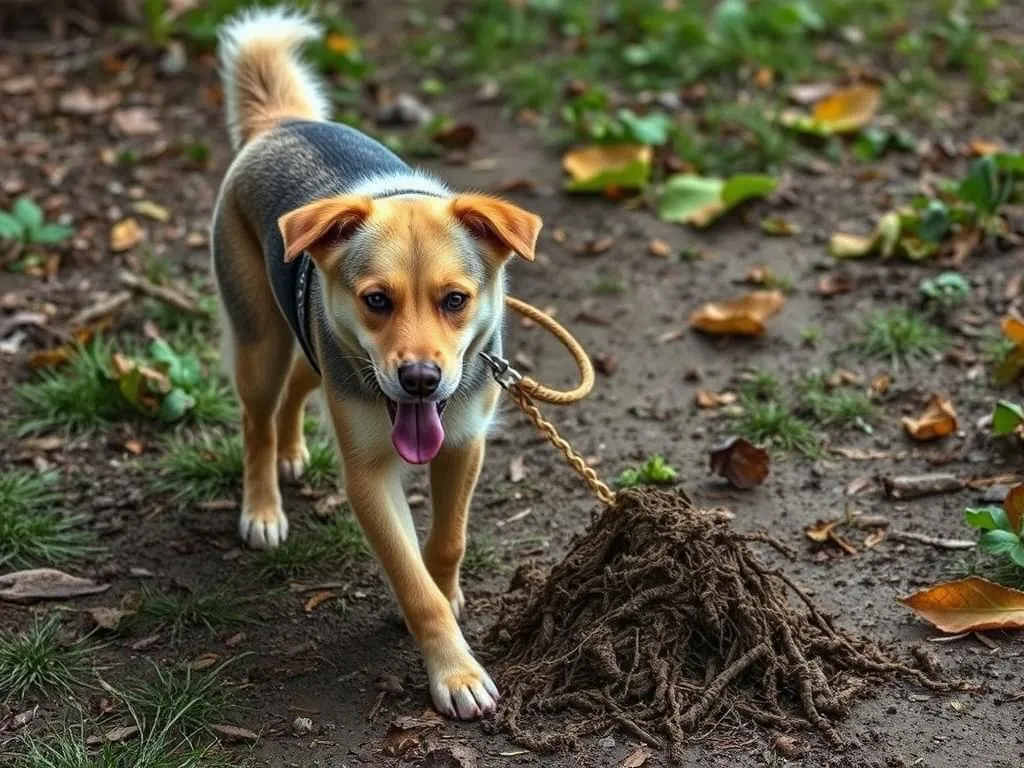
Understanding your dog’s behavior is crucial for ensuring their health and well-being. Among the many actions our furry friends engage in, walking and pooping are two fundamental behaviors that can reveal a lot about their physical and emotional states. So, why does my dog walk and poop? Let’s dive into the intricacies of these behaviors, exploring the underlying reasons and what they mean for your dog’s health.
Understanding Dog Behavior
Importance of Walking in Dogs
Walking is more than just a routine task for dogs; it plays a vital role in their physical health. Regular walks provide essential exercise, helping to maintain a healthy weight, strengthen muscles, and promote cardiovascular health. Dogs are naturally energetic creatures, and without sufficient exercise, they can become bored, anxious, or even develop behavioral issues.
Walking also provides mental stimulation. The sights, sounds, and smells encountered during a walk engage a dog’s senses, helping to keep their mind sharp. This mental engagement is just as important as physical exercise, contributing to a well-rounded and happy dog.
Why Dogs Poop
On the other hand, pooping is a biological necessity. It’s the body’s way of eliminating waste, a process that reflects a dog’s diet and digestion. A healthy dog should have regular bowel movements, usually occurring shortly after meals or walks. The frequency and consistency of a dog’s poop can be indicators of their overall health.
Diet plays a significant role in how often and how well a dog poops. A diet high in fiber can promote healthy digestion and regular elimination, while poor dietary choices can lead to constipation or diarrhea. Understanding your dog’s pooping habits is essential for identifying potential health issues.
Common Reasons Dogs Walk and Poop
Natural Instincts
Dogs have instinctual behaviors that influence their walking and pooping habits. In the wild, dogs would walk significant distances in search of food and to mark their territory. Walking allows dogs to explore their environment and establish their presence in a given area. This instinct still exists in domesticated dogs, who may feel the need to walk and sniff around before finding a suitable place to relieve themselves.
Territorial marking is another instinctual behavior related to pooping. Dogs often choose specific spots to poop, which allows them to leave their scent behind. This behavior serves as a communication tool, signaling to other dogs that they have claimed the area.
Routine and Habit
Establishing a routine is crucial for a dog’s bathroom habits. Dogs thrive on consistency, and a regular walking schedule can help them develop a predictable pooping routine. Most dogs will learn to associate certain times of the day with bathroom breaks, making it easier for owners to manage their needs.
Creating a schedule that aligns with your dog’s natural tendencies can also help reduce accidents in the house. For instance, if your dog is accustomed to going for a walk first thing in the morning, they are more likely to poop during that time. Establishing a routine not only benefits your dog’s bathroom habits but also strengthens the bond between you and your pet.
Health Concerns Related to Walking and Pooping
Signs of Digestive Issues
Monitoring your dog’s pooping habits is essential for identifying potential digestive issues. Symptoms such as diarrhea, constipation, or blood in the stool warrant immediate attention. These signs may indicate underlying health problems, such as infections, dietary intolerances, or more serious conditions.
If you notice any significant changes in your dog’s bathroom habits, it’s crucial to consult a veterinarian. Early intervention can prevent more severe health issues and ensure your dog remains healthy and happy.
Behavioral Changes
Changes in walking patterns can also indicate health concerns. A sudden reluctance to walk or changes in pace may suggest discomfort or pain. Stress and anxiety can also affect how a dog walks and poops. Dogs that are anxious may avoid going outside, which can lead to irregular bathroom habits.
Recognizing changes in your dog’s behavior is vital for addressing any underlying issues. If you observe unusual walking patterns or changes in your dog’s pooping habits, it may be time to consult a professional.
Factors Influencing a Dog’s Walking and Pooping Behavior
Diet and Nutrition
A dog’s diet is one of the most significant factors influencing their digestion and bowel movements. High-quality dog food that is balanced and rich in nutrients can promote healthy digestion, resulting in regular and firm stools. Conversely, low-quality food or sudden diet changes can lead to digestive upset, affecting how often and how well a dog poops.
It’s essential to pay attention to your dog’s dietary needs based on factors such as age, breed, and activity level. Consulting with a veterinarian can help you choose the best diet for your dog to promote optimal health.
Age and Breed Differences
A dog’s age and breed can also impact their walking and pooping habits. Puppies often require more frequent bathroom breaks due to their smaller bladders and developing digestive systems. As dogs age, they may experience changes in their metabolism and activity levels, affecting their need for walks and their pooping habits.
Certain breeds may have specific health predispositions that can influence these behaviors. For instance, larger breeds may be more prone to joint issues, which can affect their willingness to walk. Understanding your dog’s unique needs based on their age and breed can help you tailor their care for better health outcomes.
How to Encourage Healthy Walking and Pooping Habits
Creating a Walking Schedule
Establishing a consistent walking schedule can significantly benefit your dog’s health. Aim for at least one walk per day, adjusting the duration and frequency based on your dog’s age, breed, and energy levels. For younger, more active dogs, longer walks may be necessary, while older dogs may require shorter, more frequent walks.
Consider incorporating a variety of routes and environments to keep walks interesting. This not only provides physical exercise but also stimulates your dog’s mind, encouraging good behavior during walks and bathroom breaks.
Training Techniques
Training your dog to have good bathroom habits can be a rewarding process. Positive reinforcement is an effective way to encourage your dog to relieve themselves in designated areas. Reward your dog with praise or treats when they poof in the appropriate spot, reinforcing good behavior.
Consistency is key in training. Take your dog out at regular intervals and establish a command or cue that signals it’s time to go. Over time, your dog will learn to associate the command with the action, making bathroom breaks more manageable for both of you.
When to Seek Professional Help
Recognizing Warning Signs
While many changes in walking and pooping behavior are normal, certain red flags warrant veterinary attention. If your dog exhibits persistent diarrhea, vomiting, lethargy, or blood in their stool, it’s crucial to seek professional help. These symptoms may indicate serious health issues that require prompt intervention.
Additionally, if your dog has difficulty walking or shows signs of pain when moving, it’s essential to consult a veterinarian. Early diagnosis and treatment can make a significant difference in your dog’s health and quality of life.
Regular Veterinary Checkups
Regular veterinary checkups are essential for monitoring your dog’s overall health, including their digestive health. During these checkups, your vet can assess your dog’s weight, diet, and general well-being, making recommendations for improvements if needed.
Vaccinations and preventive care play a crucial role in maintaining gastrointestinal health. Keeping up with your dog’s vaccinations can prevent illnesses that may impact their digestion and overall health.
Conclusion
Understanding why your dog walks and poops is vital for maintaining their health and well-being. By paying attention to their behaviors and habits, you can identify potential health issues early and promote a healthy lifestyle through regular exercise and proper diet. As a responsible pet owner, it’s essential to create routines that benefit your dog and ensure they have the best quality of life possible.
By staying informed and engaged with your dog’s health, you can foster a deeper connection and ensure they thrive in a loving environment.









